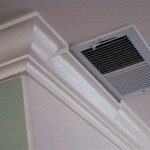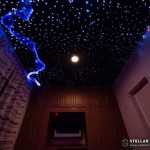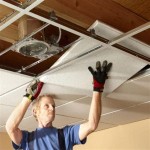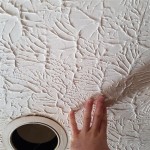Awesome Ceiling Fans To Keep You Cool In Summer Time
As temperatures rise during the summer months, maintaining a comfortable indoor environment becomes a priority. While air conditioning units are effective, they can consume a significant amount of energy, leading to higher electricity bills. Ceiling fans offer an energy-efficient and cost-effective alternative, or a complementary solution, to keep spaces cool. Choosing the right ceiling fan involves considering various factors, including size, style, features, and energy efficiency.
This article explores a range of ceiling fans designed to provide optimal cooling during the summer. It delves into different types of fans, highlighting their unique characteristics and benefits. It also addresses key considerations for selecting the most appropriate ceiling fan for specific needs and environments.
Understanding Ceiling Fan Types
Ceiling fans come in various designs and configurations, each tailored to specific needs and aesthetic preferences. Understanding the different types is crucial for making an informed decision.
Standard Ceiling Fans: These are the most common type of ceiling fan, typically featuring three to five blades and a central motor housing. They are suitable for a wide range of rooms and offer a balance of functionality and affordability. Standard ceiling fans are available in a variety of styles, from traditional to contemporary, allowing for seamless integration into existing décor.
Low-Profile Ceiling Fans: Designed for rooms with low ceilings, these fans sit closer to the ceiling than standard models. This minimizes the risk of head injuries and maximizes headroom. Low-profile ceiling fans are often used in bedrooms, hallways, and other spaces with limited vertical clearance. They maintain functionality while addressing space constraints.
Dual-Motor Ceiling Fans: These fans feature two separate motors, each powering a set of blades. This design allows for independent control of each motor, offering customizable airflow patterns. Dual-motor ceiling fans are often used in large rooms or open-concept spaces to provide targeted cooling.
Outdoor Ceiling Fans: Specifically designed for outdoor use, these fans are constructed from weather-resistant materials that can withstand moisture, humidity, and extreme temperatures. They are ideal for patios, porches, and other outdoor living areas. Outdoor ceiling fans are typically UL Listed for wet locations, ensuring safety and durability.
Smart Ceiling Fans: Integrating with smart home technology, these fans can be controlled via smartphone apps, voice assistants, or smart thermostats. They offer features such as adjustable fan speeds, timers, and automated cooling based on room temperature. Smart ceiling fans enhance convenience and energy efficiency.
Key Features To Consider
Beyond the basic type, several features can significantly impact a ceiling fan's performance and suitability for a specific space.
Blade Pitch: The angle of the blades affects the amount of air a fan can move. Blades with a steeper pitch generally move more air, providing greater cooling. However, a steeper pitch can also result in more noise and increased energy consumption. Finding the right balance between airflow and efficiency is essential.
Motor Size and Type: The motor is the heart of the ceiling fan. Larger, more powerful motors typically provide better airflow and operate more quietly. DC (Direct Current) motors are generally more energy-efficient than AC (Alternating Current) motors, contributing to lower electricity bills. DC motors also often offer more speed settings and smoother operation.
Fan Size: Selecting the appropriate fan size is crucial for optimal performance. The size of the room dictates the ideal blade span. For example, rooms up to 75 square feet typically require a fan with a blade span of 36 inches or less. Larger rooms, such as those over 400 square feet, may require a fan with a blade span of 52 inches or more. Using multiple fans can also be a solution for very large areas.
Lighting Options: Many ceiling fans come with integrated lighting fixtures, providing both cooling and illumination. These fixtures can range from simple single-light designs to more elaborate multi-light configurations. LED lighting is a popular choice due to its energy efficiency and long lifespan. Choosing a fan with dimmable lighting allows for customized ambiance.
Remote Control: A remote control offers convenient operation of the fan and its features, such as speed adjustments, light control, and timer settings. Remote controls are particularly useful for fans installed in high ceilings or in rooms where accessibility is limited.
Reversible Motor: A reversible motor allows the fan to rotate in both clockwise and counterclockwise directions. During the summer, the fan should rotate counterclockwise to create a cooling breeze. During the winter, the fan can be switched to rotate clockwise, helping to circulate warm air trapped near the ceiling and improve heating efficiency.
Selecting The Right Ceiling Fan
Choosing the right ceiling fan involves a careful assessment of the space, desired features, and budget. Consider the following steps to guide the selection process.
Assess Room Size: Measure the length and width of the room to determine the square footage. This information will help determine the appropriate fan size. Consult a size guide or online calculator to find the recommended blade span for the room.
Determine Mounting Height: Measure the distance from the floor to the ceiling. If the ceiling is low (less than 8 feet), a low-profile fan is recommended. For higher ceilings, a downrod may be necessary to position the fan at an optimal height for airflow.
Consider Style and Décor: Choose a fan that complements the existing décor of the room. Consider the color, finish, and overall style of the fan. There are numerous styles available, from traditional and rustic to modern and minimalist.
Evaluate Energy Efficiency: Look for fans with the ENERGY STAR label, indicating that they meet strict energy-efficiency guidelines. Check the fan's energy consumption rating to estimate its operating costs. DC motor fans are generally more energy-efficient than AC motor fans.
Read Reviews: Before making a purchase, read online reviews from other customers. This can provide valuable insights into the fan's performance, reliability, and ease of installation. Pay attention to reviews that mention issues such as noise, motor performance, or blade balance.
Consider Installation: Decide whether to install the fan yourself or hire a professional electrician. Installing a ceiling fan can be complex and may require electrical wiring experience. If you are not comfortable working with electricity, it is best to hire a qualified professional.
Check Warranty: Review the warranty offered by the manufacturer. A longer warranty typically indicates greater confidence in the product's durability and reliability. Look for warranties that cover both the motor and other components of the fan.
Beyond these points, consider the specific needs of the space. For bedrooms, a quiet fan with dimmable lighting may be preferred. For living rooms, a larger fan with a stylish design may be more appropriate. For outdoor areas, a weather-resistant fan that can withstand the elements is essential.
Proper maintenance of a ceiling fan is also crucial for ensuring its longevity and performance. Regularly clean the blades to remove dust and debris. Check the screws and connections to ensure they are tight. Lubricate the motor if necessary, following the manufacturer's instructions. These simple steps can help keep the fan operating efficiently and effectively for years to come.
By carefully considering these factors, it is possible to select a ceiling fan that provides optimal cooling, enhances the aesthetic appeal of the space, and contributes to energy savings.

The 5 Best Ceiling Fans Of 2025 Rewiews

The 5 Best Ceiling Fans Of 2025 Rewiews

How To For A Ceiling Fan Reviews By Wirecutter

The Best Ceiling Fan Direction For Summer

Ceiling Fan Direction For Summer Set It To Turn This Way

The Best Ceiling Fan Direction For Summer

Ceiling Fan Direction In Winter Vs Summer Taskrabbit Blog

Best Ceiling Fans For Your Home The Depot

Which Way Should Fan Spin In Summer Or Winter Hunter

Best Ceiling Fans For Your Home The Depot
Related Posts








